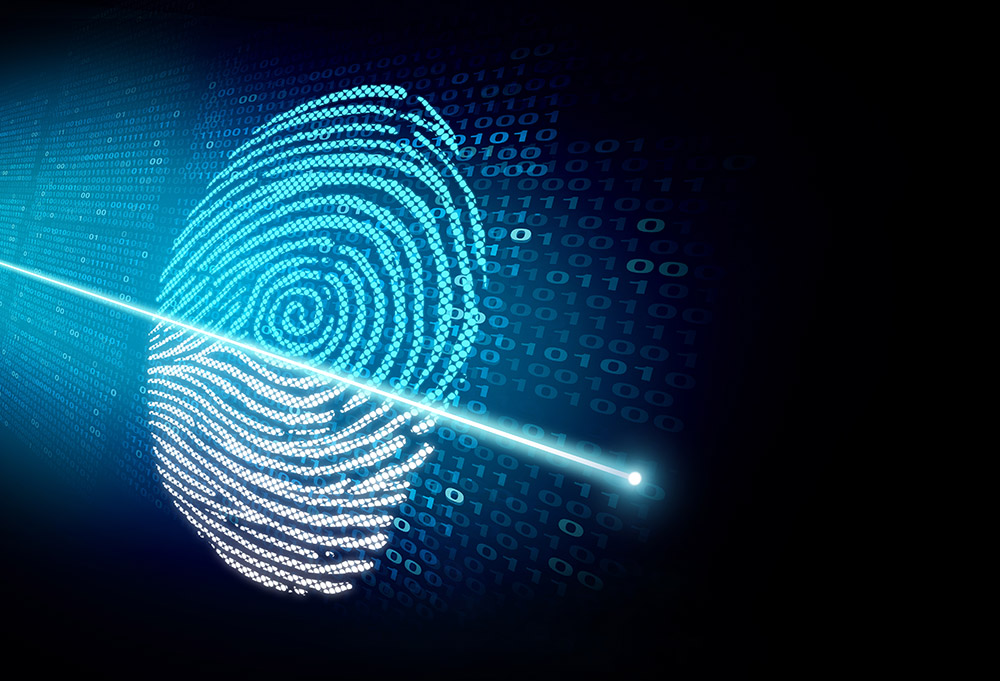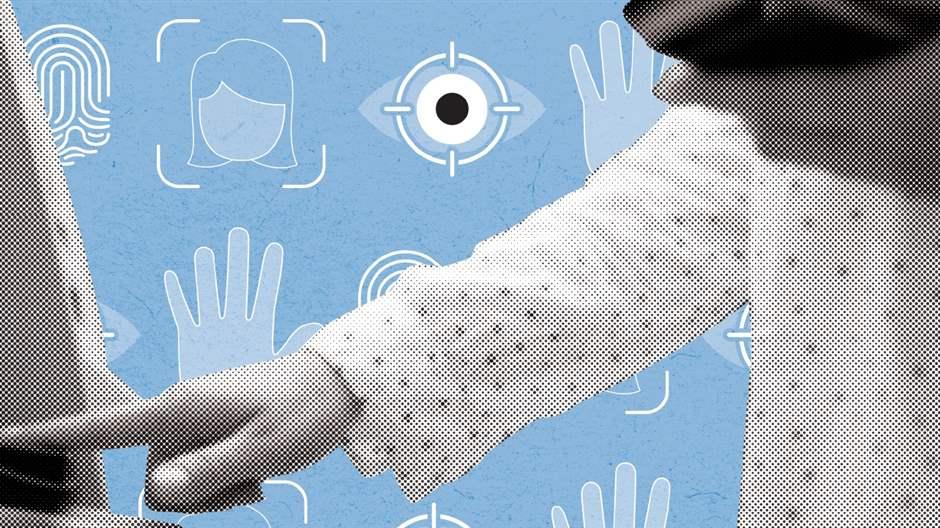Two-factor authentication (2fa) and biometrics strengthen security by using personal traits. These methods provide an extra layer of defense against cyber-attacks and unauthorized access.
In today’s digital world, data breaches and security threats are becoming more frequent and sophisticated. To prevent unauthorized access to our digital accounts, various security measures have been implemented. Two-factor authentication (2fa) and biometrics are two such methods that provide additional security to our online accounts.
2fa requires users to provide two forms of identification, typically a password and a code sent to their mobile device, to access their account. Biometric authentication uses personal traits, such as fingerprints, facial recognition, or voice recognition, to verify the user’s identity. By using these methods, individuals can reinforce their online security and safeguard their personal information from potential cyber-attacks and identity theft.

Credit: traitware.com
Understanding The Importance Of Personal Traits For Digital Security
Personal Traits Are A Crucial Component Of Securing One’S Digital Presence.
When it comes to digital security, people tend to focus on technology-centered solutions such as encryption and firewalls. However, personal traits such as biometrics can provide a vital layer of security. Here are a few reasons why personal traits matter in digital security:
- Personal traits such as fingerprints and facial features are unique to every individual.
- Biometrics cannot be lost or forgotten like passwords or access codes.
- Personal traits are non-transferable, unlike smart cards or access badges.
- Biometric authentication is harder to fake or duplicate, making it more secure.
The Role Of Personal Traits In Enhancing Digital Security Is Often Underrated.
Despite the clear advantages of using personal traits for security, there is still a reluctance to adopt these technologies. This is due to several factors, such as:
- Fear of data breaches and privacy violations.
- The perceived inconvenience of using biometric authentication.
- The cost of implementing biometric systems.
However, the benefits of using personal traits for security far outweigh the drawbacks. These technologies can provide a more secure and user-friendly authentication process, without compromising privacy.
Exploring The Reasons Why Personal Traits Matter In Digital Security.
Personal traits such as fingerprints, facial features, and voice patterns are becoming increasingly important in digital security. Here are a few key reasons why:
- Personal traits are difficult to replicate or steal, making them more secure than traditional passwords.
- Biometrics allow for a more seamless authentication process, improving user experience and reducing the risk of errors.
- Personal traits provide an additional layer of security, making it harder for cybercriminals to access sensitive information.
Overall, personal traits are a valuable component of digital security and should be considered in any cybersecurity strategy. By adopting biometric technologies, individuals and organizations can improve their security posture and protect their sensitive data.
Leveraging Personal Traits For Secure Two-Factor Authentication (2Fa)
Two-factor authentication (2fa) has quickly become one of the most popular methods of securing online accounts. With hackers becoming increasingly sophisticated and data breaches more common, it’s essential to have an extra layer of protection. Biometrics and personal traits have been proposed as a promising solution to improving the security of 2fa.
In this section, we’ll explore how utilizing personal traits can enhance the security of 2fa and the different types of personal traits that can be used.
Two-Factor Authentication (2Fa) Is A Reliable And Secure Method Of Protecting Online Accounts.
- 2fa provides an additional layer of protection to traditional username and password login credentials.
- Two-factor authentication can be performed using a variety of methods, such as sms authentication, mobile apps, and hardware tokens.
- It is currently one of the most reliable and secure methods for protecting online accounts.
Personal Traits Can Be Utilized To Strengthen The Security Of Two-Factor Authentication Processes.
- Personal traits are unique characteristics that can be used to identify individuals, such as facial recognition, fingerprints, and voice recognition.
- By using personal traits, it can be much more challenging for hackers to penetrate online accounts.
- Personal traits are a valuable asset for improving the overall security of 2fa processes.
Examining The Different Types Of Personal Traits That Can Be Used For 2Fa.
- Fingerprint recognition is one of the most popular types of personal traits used for 2fa.
- Facial recognition is another popular biometric trait used for 2fa. It involves using a camera or scanner to match an individual’s face with an image already stored in the system.
- Voice recognition is another potential trait that could be used for 2fa, requiring users to verify their identity through their unique voiceprint.
- Other personal traits that could potentially be used for 2fa include iris and retina scanning and hand geometry recognition.
Leveraging personal traits for secure two-factor authentication is a game-changer to enhance online security. The use of personal traits coupled with traditional 2fa measures can mitigate security risks, presenting a significant obstacle to hackers looking to gain unauthorized access. The possibilities of biometric personal traits go beyond the discussed methods, and future advancements will undoubtedly present even better options.
Biometric Authentication: A Game Changer In Digital Security
As the digital world continues to expand, keeping online accounts secure is becoming more critical. Two-factor authentication (2fa) has been a standard security measure for most websites. However, biometric authentication is becoming a popular authentication method, and many industry experts believe that it could be the future of digital security.
In this section, we will explore the benefits of biometric authentication, how it differs from traditional authentication methods, and how personal traits play a key role in this authentication technique.
Biometric Authentication Is A Rapidly Growing Field In The Digital Security Domain.
Biometric authentication uses personal and unique physical characteristics to identify an individual. Some of the most commonly used biometric traits include fingerprints, facial recognition, iris, voice, and even dna. Here are some key benefits of using biometric authentication:
- High security: Biometric authentication is more secure than traditional authentication methods like passwords. It’s almost impossible to replicate a person’s unique physical characteristic, such as a fingerprint or facial features.
- Increased convenience: With biometric authentication, users do not need to remember their passwords. It eliminates the need for users to create different passwords for different accounts, which can increase the risk of a security breach.
- Cost-effective: Biometric authentication systems are cost-effective compared to traditional authentication methods, which can be expensive to manage and maintain.
Exploring The Benefits Of Biometric Authentication Over Traditional Authentication Methods.
Traditional authentication methods like passwords and pins can be cumbersome and frustrating for users. They can be easily forgotten, easily cracked, and reused. Biometric authentication, on the other hand, has significant benefits over traditional authentication methods, including:
- A higher level of security – as mentioned earlier, biometric authentication is almost impossible to replicate or hack.
- Improved user experience – biometric authentication is convenient, faster, and more comfortable for users as they do not always have to keep their credentials in mind.
- Reduced helpdesk costs – with biometric authentication, users are less likely to forget their passwords or pins, reducing the number of helpdesk requests.
Analyzing How Personal Traits Play A Key Role In Biometric Authentication.
Personal traits are unique to each individual. Biometric authentication relies on the uniqueness of personal traits to identify and verify an individual. Here’s how personal traits play a crucial role in biometric authentication:
- Personal traits are unique – a person’s biometric traits cannot be duplicated, making it an ideal authentication method.
- Personal traits are measurable – biometric traits of an individual can be accurately measured and compared to those already stored in the database.
- Personal traits are always with the individual – a person’s biometric traits are part of their physical makeup, making it always available for identification purposes.
Biometric authentication is becoming the preferred authentication method for many websites. It offers a higher level of security, improved user experience, and cost-effectiveness. Moreover, biometric authentication uses personal traits that are unique, measurable, and always with the individual. It’s no surprise that biometric authentication is rapidly growing in the digital security domain, and its future looks bright.
Frequently Asked Questions For Two-Factor Authentication (2Fa) And Biometrics: Strengthening Security With Personal Traits
How Does Two-Factor Authentication (2Fa) Work?
2fa adds an extra layer of protection by requiring a second authentication method for login.
What Is The Advantage Of Biometrics For Authentication?
Biometrics offers a more secure and convenient way to authenticate a user’s identity.
What Are Some Common Biometric Authentication Methods?
Common biometric authentication methods include fingerprint, face recognition, iris scanning, and voice recognition.
Conclusion
As online threats continue to evolve, it’s essential for individuals and organizations to implement advanced security measures. Two-factor authentication and biometric systems are two of the most effective tools at our disposal. While 2fa makes login attempts more secure through the use of a second layer of verification, biometric authentication goes one step further by using personal physical traits, rendering an attack on the system challenging.
The benefits brought by these technologies cannot be denied, securing not only our personal data but financial transactions and sensitive information. These are the reasons why more and more companies and individuals are adopting these security measures to protect their digital assets.
As biometric technology continues to evolve, the future looks promising with even more advanced and foolproof systems on the horizon. There is no reason to delay, given that technology has already made it possible for a more secure world.

